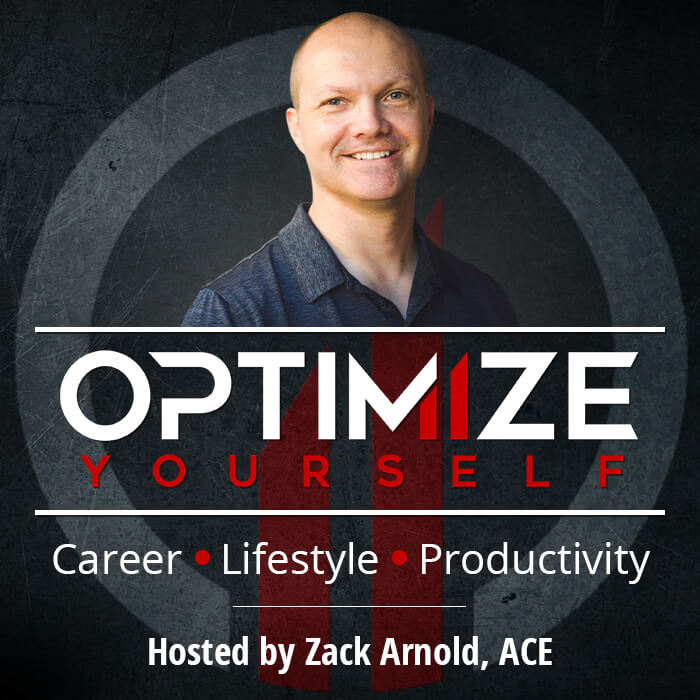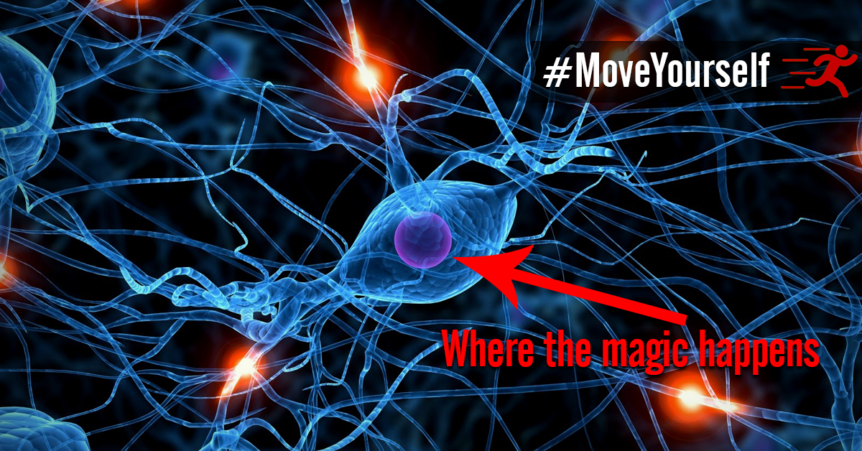

Zack Arnold
Tired of Sitting and Want to Ignite Your Energy & Creativity? Start Moving More.
As a creative professional, your greatest asset is your ability to create ideas and make decisions. You are paid for your opinions. Yet despite the unbelievably vital role your creativity plays in your career (and ultimately your ability to provide for your family), where do you put your brain?
Your brain probably sits in a small dark room. All. Day. Long.
Let’s be honest: Sitting all day long just plain sucks. There is nothing worse than slouching in front of a computer for 12 straight hours struggling to focus on the creative task at hand, then standing up at the end of the day and feeling like you were just hit by a truck. When you get home you barely have the energy to stand in front of the open refrigerator door as you say to yourself, “I know I should make something decent…but I just don’t have the energy.”
Three hours later you find yourself four episodes deep into “Stranger Things” on Netflix with an empty bag of chips by your side (let’s be honest: Two bags). As you lick off the orange residue from your fingers, you ask yourself…
“How can I be this exhausted? I didn’t do anything all day!”
As you stumble off to bed that nagging voice in the back of your head says, “I know I should’ve gone to the gym today. I’ll try again…tomorrow.” But tomorrow never comes because there just aren’t enough hours in the day.
You sleep late the next morning, sit for another 16 hours straight, and the cycle continues.
Rinse. Lather. Repeat for 30 years.
It’s no mystery at this point: We all know that sitting is bad for us. Google “Sitting is killing you” and you’ll get 5.78 million results (I’m proud to say that one of my articles made the top 25).
Yes, the statistics on sitting are downright terrifying:
- 86% of Americans sit all day at work (67% don’t like it) [1]
- The average American is sedentary for 21 hours per day [1]
- Lack of physical activity accounts for 20% of the deaths of people 35 years or older [1]
Before heading down this road (again), I want to make it clear I have no intention of contributing another “Sitting Is The New Smoking” article to the world (that phrase returns over 19 million search results), I’d rather focus on the amazing physical and cognitive benefits you can derive from moving more so you can learn how to have energy left over at the end of a long day to actually live your life.
WHY EVERYTHING YOU’VE BEEN TOLD ABOUT EXERCISE ISN’T WORKING
It’s not like I’m going to write, “You should be moving more throughout the day,” and you’re going to say, “Wait, what? You mean I need to be more active? Huzzah!” But knowing that sitting is bad clearly isn’t enough to motivate people. The question is given the complete and total lack of free time in the constantly-moving busyness of the 21st century, what alternative do you have?
According to the media and the multi-billion dollar fitness industry, you essentially have two options:
- Option #1: Do absolutely nothing, sit all day long, eat poorly, become fat, ugly, unattractive, and then die
- Option #2: Exercise 6 days a week (everyone needs a “rest day” after all), eat an impeccable vegan/paleo/Mediterranean diet, and become one of those amazing “Before and After” pictures you see on late-nite infomercials.
There is a giant chasm in between these two options that I like to call “Everybody else.”
The problem is there’s nothing sexy about taking a flight of stairs instead of waiting for the elevator. You can’t make gazillions of dollars selling “moderate long-term lifestyle change.” Yet the vast majority of people fail to reach their exercise goals or complete their fitness programs because success is measured by long-term results, and results like losing 30 pounds don’t happen overnight.
Here’s the secret nobody tells you:
You don’t have to go to they gym every single day to be considered, “healthy,” but you do need to move more.
That’s the brilliance of reframing your mindset from “I have to exercise,” to “I need to move more throughout my day.” Unlike “all or nothing” exercise programs, when you make the conscious choice to be more active, the benefits are profound and (almost) immediate.
To be clear before moving forwards, I’m not saying you shouldn’t exercise. In fact, I highly recommend it if you have a pulse. But if you are working 14 hours a day and trying to raise a family, getting to the gym or doing a round of P90X every single day just isn’t a realistic expectation. There has to be a middle ground.
Shockingly, our genes expect us to move 10-14 miles per day [2]. PER DAY. If you’re already counting your steps with a Fitbit or similar technology, you know that 10,000 is the magic number recommended by the American Heart Association [3]. That’s roughly 5 miles per day, less than half of the movement our bodies and minds expect, according to our genetic code.
The scary thing is that your brain functions very similar to a muscle: With lack of activity, your brain will atrophy, and conversely, the more you feed your brain, the more it will grow.
The best way to feed your brain the fuel it needs to function at an optimal level is movement.
HOW MOVEMENT DECREASES DEPRESSION, ANXIETY, AND ATTENTION ISSUES (AND INCREASES YOUR ABILITY TO LEARN AND RETAIN INFORMATION)
When you move, especially when you do quick bursts of high intensity exercise, even for as little as 60 seconds, your brain releases the neurotransmitters serotonin, dopamine, and norepinephrine. So every bout of activity is like taking a small dose of Prozac and Ritalin mixed together.
Exercise has been proven beyond the shadow of a doubt to help people regulate their anxiety, depression, and their attention issues [4]. As someone who has suffered from adult ADD since college, I’ve been down the prescription drug road and I took Adderral for a short time to manage my attention issues. Having also managed my depression, anxiety, and attention issues with exercise and activity, I can tell you firsthand that perpetual motion throughout the day is a much better long term solutions for me. (Just to be clear, I am not giving medical advice of any kind, especially when it comes to taking medication or choosing to eliminate medications in exchange for increased activity. So please make sure to consult your physician first before changing how you manage your own medication. I am just sharing my personal story with you to give you some personal perspective).
According to Dr. John Ratey, author of Spark: The Revolutionary New Science of Exercise and the Brain, “A massive Dutch study of 19,288 twins and their families published in 2006 showed that exercisers are less anxious, less depressed, less neurotic, and also more socially outgoing. A Finnish study of 3,403 people in 1999 showed that those who exercise at least two to three times a week experience significantly less depression, anger, stress, and “cynical distrust” than those who exercise less or not at all.”
Hmmm…. “cynical distrust” sounds awfully similar to “The Grumpy Editor.”
Beyond the release of neurotransmitters, the other very important chemical that is released during movement and exercise is called BDNF, or brain-derived neurotrophic factor. The reason this is so important is because BDNF is considered “Miracle-Gro for the brain,” meaning the more of it that is released, the faster your new neural connections can grow, the better your memory becomes, the faster you can learn new information, and thus ultimately become smarter over time.
“In a 2007 study of humans, German researchers found that people learn vocabulary words 20 percent faster following exercise than they did before exercise, and that the rate of learning correlated directly with levels of BDNF. Along with that, people with a gene variation that robs them of BDNF are more likely to have learning deficiencies. Without Miracle-Gro, the brain closes itself off to the world.”
Furthermore, in my podcast interview with Dr. John Ratey, he cites a study done in Sweden with 1.2 million boys, and they found a definitive connection between fitness and cognition. Even when they tested identical twins, they found that the less active of the two had lower cognitive scores.
WHY BUILDING MOVEMENT INTO YOUR DAY IS A SOUND INVESTMENT OF TIME (AND MONEY)
Beyond your creativity, perhaps your second most important professional investment (especially if you are a film editor like me) is your ability to retain information. If you have 40 hours of raw footage to review and then ultimately edit into a 42 minute episode of television, you better have systems in place to make sure you can retain as much of your raw footage as possible and synthesize your creative ideas into a finished product.
But instead of focusing on optimizing brain function, most people instead invest in hard drives, graphic cards, fancy plug-in packages, and even worse: Fancy desk chairs. (I cannot tell you how many times I’ve had to refer people to my blog post Ready To Blow Your Paycheck On the Perfect Office Chair? Read This First).
According to Dr. Joan Vernikos, the former head of the life sciences division at NASA, as well as the author of Sitting Kills, Moving Heals…
“When you are either sitting or lying down, your body is experiencing gravity in a very similar fashion as being weightless in space. When the force of gravity is no longer present on the human body:
- Your muscles and your bones begin to atrophy
- Blood circulation is reduced to the brain and your brain is deprived of oxygen
- Triglycerides increase (sugar in the blood) and you become insulin resistant (meaning that your body goes into a pre-diabetic state)
- Inflammation in the body increases
- Your metabolism slows to burning as little as 1 calorie per minute
As depressing as this may sound, I only bring it up because if you move more throughout the day, the opposite of every single item listed above becomes true.
Movement every 20-30 minutes, even as simple as just standing up and sitting right back down, interrupts the negative effects of sitting. So it’s not really so much about the fact that you’re sitting…
“What’s important is how much time you are sitting without interruption.”
Therefore the more you are able to move throughout the day and protect your brain, the better your ability to make creative decisions, the more money you are ultimately able to earn, and the better you can provide for your family.
YOU DON’T NEED A GYM MEMBERSHIP (BUT YOU DO NEED A SYSTEM)
Given all the drawbacks of sitting that I went through ad nauseum in my blog post Sitting Is Killing You, But Standing Isn’t the Answer (And Neither Is Exercise), and given the tremendous benefits listed previously that movement and exercise can bring, it seems to me the next logical step if you want to protect the most important investment you have (in case you haven’t been following along…that would be your creativity) is to build a system into your day to become more active. And until recently this was much more difficult than it sounds. I know, because I have spent the last decade fighting this battle myself.
The good news is you don’t have to go through ten years of trial and error like I have (and spend over $75,000) experimenting with what works and what doesn’t…because I’ve done all the hard work for you. You have the benefit of my mistakes and failures and the fact that I have drastically shortened your learning curve.


